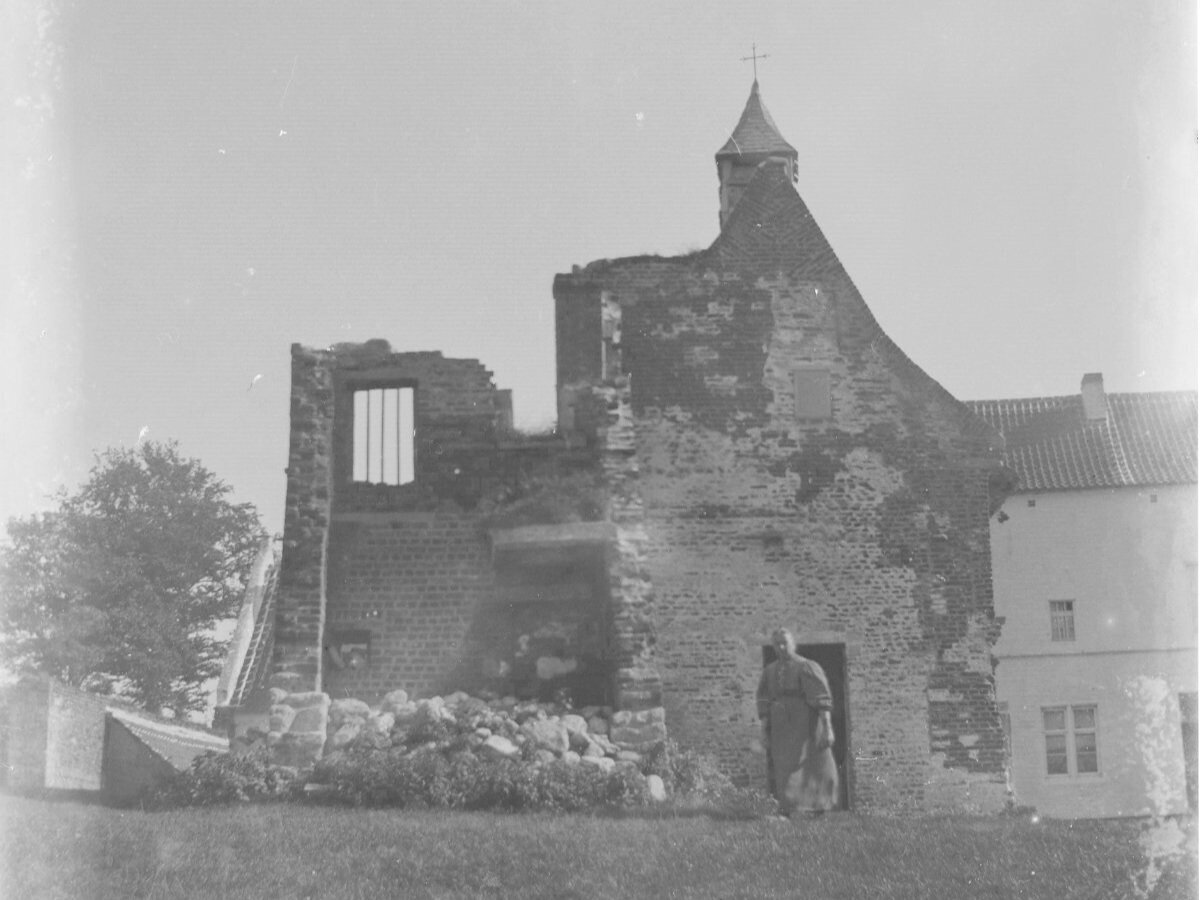
9. Cathedral of St. Michael and St. Gudula, Brussels - 10 Sept 1900 | Glass Plates
Today known as the Cathedral of St. Michael and St. Gudula, construction for this monumental Brabantine Gothic church began in 1226 under Henry I, Duke of Brabant (1165-1235). Due to its ambitious size and intricate masonry, it took nearly three centuries to complete, with work concluded in 1519.

8. Rue Royale, Brussels - 10 Sept 1900 | Glass Plates
It is a Monday morning in the summer of 1900; crowds wander down Brussels’s royal thoroughfare, horse-drawn trams glide along the centre of the street, and a tourist sets up his camera…

7. Palais de Justice, Brussels - 10 Sept 1900 | Glass Plates
Captured on 10th September 1900, glass plate 7 depicts the intimidating edifice of the Palais de Justice, Brussels; and make no mistake about this, the Palace of Justice was built with intimidation in mind…

6. Bois de la Cambre, Brussels - 12 Sept 1900 | Glass Plates
Taken on 12th September 1900, glass plate 6 captures the Swiss-style Chalet Robinson on its lake island in the middle Bois de la Cambre park in Brussels.

4 & 5. North Gate at Hougoumont, Waterloo - 11 Sept 1900 | Glass Plates
Glass plates 4 and 5 are unusual as they both show the same location, and are the first to give some clue as to who exactly is making this journey…

‘The Black Swan’ by Rafael Sabatini (1962) | Olde Timey Book Review
Enticed by the vibrant cover illustration, in this Olde Timey Book Review I examine a 1962 reprint of The Black Swan by Rafael Sabatini.

3. Ruins of Chapel at Hougoumont, Waterloo - 11 Sept 1900 | Glass Plates
Having travelled to Waterloo in September 1900, the unknown photographer made his pilgrimage to the solemn memorials commemorating the deeds and deaths that occurred during the battle that raged here a little over eighty-five years previous.

‘The Shaw Alphabet Edition of Androcles and the Lion’ by Bernard Shaw (1962) | Olde Timey Book Review
In this Olde Timey Book Review I delve into a peculiar little printing of one of Bernard Shaw’s plays, The Shaw Alphabet Edition of Androcles and the Lion (1962). The history of its publication involves an eccentric author’s dying wish, a protracted legal case, and fundamental questions about the construction of the written English language.

2. Monuments on the Field of Waterloo - 11 Sept 1900 | Glass Plates
Zooming out from the Lion’s Mound examined in our last entry, this second glass plate displays a trio of Seventh Coalition monuments commemorating the Battle of Waterloo.

Cumaean Sibyl - Prophetess of Rome | 3V
Seeking to learn the future for themselves or their loved ones, anxious pilgrims would make their way down the tunnel carved into the rockface of Cumae. Deep in the inner chamber, perched on her tripod, enwreathed by a haze of incense, the Sibyl sang their fates…

1. The Lion’s Mound, Waterloo - 11 Sept 1900 | Glass Plates
It has been 206 years to the day since the Battle of Waterloo, but it is not until 85 years after this historic clash that our humble story begins…

Tyrone Power: Swashbuckling with the Star Persona
Tyrone Edmund Power III, or 20th Century Fox’s Tyrone Power, was one of the marquee stars of his day, spanning from the 1930s to the late 1950s. Yet, despite his popularity at the time, his name is rarely listed amongst the truly great stars of the era.
This is an exploration of the question of whether stardom, for an actor, can be a trap.

Guglielmo Marconi - Pioneer of Radio Transmission | 3V
Struck by the coastal winter gales of Newfoundland, a hexagonal Baden-Powell kite strained against its string and copper wires. Overseeing this windborne receiver, the bright-eyed Italian, Guglielmo Marconi, waited atop the appropriately named Signal Hill for a signal from over two thousand miles away.

‘Timber in War-Time’ by Reginald Davey (1941) | Olde Timey Book Review
In this Olde Timey Book Review I examine everyone’s favourite handbook on timber legislation in Britain during the Second World War, ‘Timber in War-Time’ by Reginald Davey (1941). While the text is admittedly rather dry, the book itself is an insight into a legitimate concern during the 1940s that touched many aspects of life, namely Britain’s need for timber.
